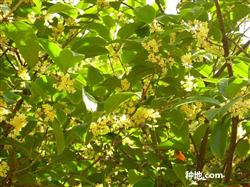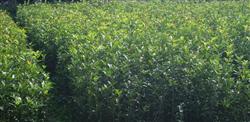What diseases should be prevented when planting sweet-scented osmanthus trees in Guangxi?

What diseases should be prevented when planting sweet-scented osmanthus trees in Guangxi? Is there any way to control sweet-scented osmanthus is a set of greening, beautification, fragrance in one, ornamental and practical both excellent garden tree species, but also a traditional Chinese evergreen aromatic plant, widely planted in many areas. However, in recent years, the damage of diseases and insect pests of sweet-scented osmanthus increased, resulting in the decline of ornamental value. In this paper, the occurrence characteristics and control experience of the main diseases are briefly introduced as follows. Anthracnose is easy to occur in a high-temperature and humid environment. At the initial stage of the disease, there are nearly round purple-brown spots on the stems and leaves, and there are black spots on them. In the later stage of the disease, peach sticky substance overflowed from the small black spots in the later stage of the disease, resulting in dead leaves. Starting from July and August, after spraying 500-600x solution of Dyson zinc once or twice, 50% Dysenamine 800-1000 fold solution was used to control it, and the litter and weeds in the garden were completely removed in winter. Apical spot disease often occurs at the tip or edge of the leaf. At the initial stage of the disease, small brown spots appeared on the leaves, which gradually expanded into round or irregular disease spots. In the later stage of the disease, there are many black dots on the disease spot, but there is no mucous overflow. In severe cases, multiple disease spots are connected to form large withered spots, and the leaves are curled and broken. At the beginning of the disease, 1 ∶ 2 ∶ Bordeaux solution was sprayed, and then 50% benzoate wettable powder 1000 to 1500 times was used for prevention and treatment. In the early stage of the onset of brown spot, chlorotic small yellow spots appeared on the leaves, which gradually expanded into nearly round spots, yellowish brown to grayish brown, with a yellow halo on the periphery. In the later stage of the disease, black mildew is produced on the disease spot. When the disease spots are connected, the leaves die and fall off. At the initial stage of the disease, spray 1 ∶ 1 ∶ 200 Bordeaux solution, and half a month later, spray 65% Dysen zinc wettable powder 800x liquid or 50% bacilli wettable powder 1000 times solution for prevention and treatment. Rot mainly occurs in the root and stem, and the injured part is waterlogged. After the disease spot expands gradually, the plant growth weakens and even dies. The rainy season in summer and autumn is serious. A small amount of sulfur powder was sprinkled around the plant in early spring and white in winter. The whitening agent was prepared with 25 jin of quicklime, 3 jin of salt, 0.5 jin of vegetable oil, 1 jin of sulfur powder and 100 jin of water. After the appearance of the disease spot, shave it clean and apply Fumei arsenic kerosene agent. Click to get more sweet-scented osmanthus planting techniques
- Prev

How to make sweet-scented osmanthus trees bloom?
How to make sweet-scented osmanthus trees bloom? Is there any effective way that sweet-scented osmanthus does not blossom. The reason is too much nitrogen fertilizer, insufficient phosphorus and potassium fertilizer and lack of micro-clothing elements; secondly, lack of light; third, unreasonable pruning. The above is also a common problem of potted sweet-scented osmanthus in the north. At present, it is the stage of flower bud formation, and phosphorus and potassium should be applied immediately.
- Next

What are the diseases and insect pests of sweet-scented osmanthus trees?
How to plant Osmanthus fragrans? Please guide the planting of sweet-scented osmanthus flowers as small evergreen trees, such as golden cinnamon (orange flowers), silver cinnamon (yellow and white flowers), cinnamon (orange-red flowers), four seasons osmanthus (yellowish white flowers) and so on. Osmanthus fragrans is not only an important greening tree species, but also a famous spice plant, which has high edible value. First, complexity.
Related
- Fuxing push coffee new agricultural production and marketing class: lack of small-scale processing plants
- Jujube rice field leisure farm deep ploughing Yilan for five years to create a space for organic food and play
- Nongyu Farm-A trial of organic papaya for brave women with advanced technology
- Four points for attention in the prevention and control of diseases and insect pests of edible fungi
- How to add nutrient solution to Edible Fungi
- Is there any good way to control edible fungus mites?
- Open Inoculation Technology of Edible Fungi
- Is there any clever way to use fertilizer for edible fungus in winter?
- What agents are used to kill the pathogens of edible fungi in the mushroom shed?
- Rapid drying of Edible Fungi

